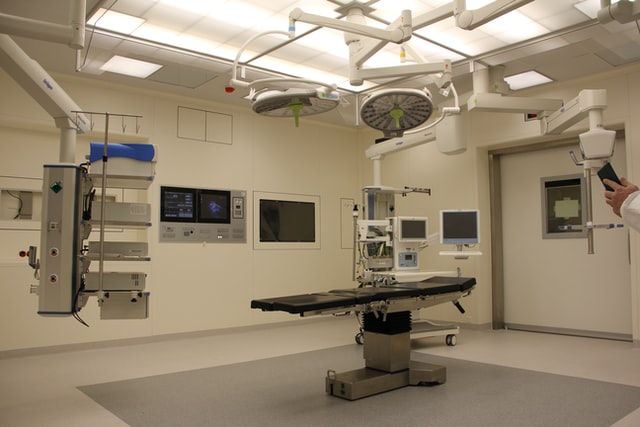Since 2018, over a million robotic operations are performed every year worldwide. Laparoscopic keyhole surgery, a technique first popularised throughout the 1980’s, steadily proved itself by offering benefits in patient outcomes. Chief amongst these was drastically improved patient recovery time, a direct result of the much smaller incisions required for keyhole access. This facilitated shorter hospital stays and enabled a higher quality of postoperative life. Minimising waiting times, maximising resources, and improving patient care now drive the continual development of robot assistance, and are aimed at refining the benefits associated with minimally invasive techniques. By technologically enhancing surgeons’ sight, dexterity, and accuracy, the aspiration is to advance further the advantages of keyhole surgery. In this blog, we outline the technical features of two competing robotic systems, Da Vinci and Versius, and discuss implications regarding their implementation in light of UK health system resource allocation and the optimisation of surgical outcomes.
Da Vinci
Since its installation within London’s St Mary’s Hospital in 2001, Intuitive Surgical’s Da Vinci Surgical System has monopolised the UK market. As a bulky, singular unit, DaVinci allows surgeons to operate via an enclosed console, which controls robotic arms fixed to a central cart. Now recognised as the gold standard in testicular cancer operations, the majority of contemporary robotic procedures and publications have aligned exclusively with this specific brand of surgical robot; as Yates et al. (2011:1710) assert “robot assisted surgery is Da Vinci surgery”. Although DaVinci is primarily used in urology, it has begun to diversify into other specialist areas from colorectal surgery to gynaecology.
Compared with traditional minimally invasive methods, the Da Vinci offers surgical professionals three-dimensional vision and greater flexibility of instrument manipulation. However, through repeated robotic performances by surgeon users, system-specific limitations such as a steep learning-curve, lack of haptic feedback, considerable size, high purchase and maintenance costs have been identified.
Versius
Cambridge Medical Robotics (now CMR Surgical Ltd.) has offered a substantial challenge to Intuitive’s DaVinci system, which once ruled supreme as a price-setting monopoly. Now vulnerable to competition upon the 20-year expiration of initial key patents, Intuitive Surgical is being challenged by newer, constantly emerging brands of surgical robot. In contrast to Da Vinci, CMR’s Versius system is composed of separate arm pieces, allowing for increased mobility and a more fluid configuration process. Perhaps the most important distinction is that it is less expensive, both upfront and as claimed, over sustained clinical use. In a resource-limited healthcare context such as within the NHS, the importance of resource allocation cannot be overstated. As the Versius system plays catch-up to the more field-tested instrumentation of Da Vinci, it races to match its promise to provide all the same benefits of Robot-Assisted Surgery (RAS) at a fraction of the cost to the healthcare system; an enticing offer if it can continue to hold true as the system simultaneously expands implementation and improves its features.
The way forward for RAS
In the NHS, a single-payer healthcare system, it is particularly vital that investments in technology answer to the utility of the need-based system as a whole. With the promise of a more cost-effective approach and the same purported advantages of competitor systems such as DaVinci, it seems Versius stands to offer this solution. However, because Versius is a newer technology, its instruments have not been put to the test in real-world settings to the same extent as DaVinci, which have seen significantly longer term clinical use and thus, refinement. However, this landscape has been gradually changing since 2018, making for an intriguing dynamic to monitor.
Both DaVinci and Versius are currently implemented into real-world clinical use right here on our doorstep in Edinburgh. This affords an exciting opportunity to research the comparative clinical performances of each of these machines in remarkably similar (if not semi-controlled) environments and functional applications. The robotic arms race, so to speak, is unfolding before our eyes and within the cutting-edge operating theatres of now.
As wider clinical implementation of both the DaVinci and Versius systems unfolds, continued research must be done to examine clinical effectiveness. It is imperative that this retains focus on the voice of surgeons as expert users, to account for, and convey the directions and qualities of innovation necessary to ensure optimal evolution of this exciting technological frontier. By analysing two competing surgical systems, future research will advance debates in the fields of robotics and medicine by offering data that can be applied to robotic training, policy, and governance. With an eye always on the considerations of system-wide resource allocation and patient outcomes, we can hope that this technological rivalry ensures that improving quality of care remains the primary objective of innovation.
Andrew Linn is a first year PhD student at the University of Edinburgh’s Usher Institute researching the practices of implementation and innovation in surgical robotics, with a background in academic Philosophy.

Rachel Simpson is a third year PhD student in Science Technology and Innovation Studies at the University of Edinburgh. Her Economic and Social Research Council (ESRC) funded PhD project aims to understand how surgical practice is changing with robot-assisted surgery.
Image by Marcel Scholte on Unsplash.

